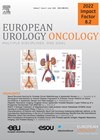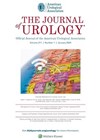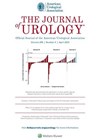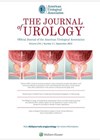
Journal Reviews
Rethinking stone-free rates and surgical outcomes in endourology
Retrograde intrarenal surgery (RIRS) and percutaneous nephrolithotomy (PCNL) are two key minimally invasive treatments for kidney stones in both adults and children. The success of these procedures is primarily measured by two factors: (1) the absence of complications and (2)...
Patients’ preferences for additional (cytoreductive) treatments to the prostate and metastasis in metastatic prostate cancer
Patients diagnosed with metastatic prostate cancer at first diagnosis or de novo synchronous metastatic hormone-sensitive prostate cancer (mHSPC) have had reported increases in overall survival due to rapid advances and intensification of systemic therapy regimes beyond traditional androgen deprivation therapy...
Evaluation of a web-based eHealth programme for children with urinary incontinence: eADVICE Trial
Long waiting times for specialist urology outpatient clinics for children are frustrating for both parents and health practitioners. Delays may result in a deterioration in health and quality of life. Electronic Advice and Diagnosis Via the Internet following Computerized Evaluation...
Long term outcomes of primary ureterovesicostomy for the primary obstructive megaureter
Primary obstructive megaureter is dilatation of the ureter secondary to narrowing at the vesicoureteric junction (VUJ). Many (80%) require no intervention, however, a select number do for worsening hydroureteronephrosis, decreasing renal function, prolonged drainage time, recurrent urinary tract infections or...
Long-term complications of bulking agents in the treatment of SUI
Incontinence poses a substantial economic burden on the UK’s NHS, estimated at £536 million in 1999/2000, equivalent to approximately 1.1% of the total NHS spend, for both men and women. Over two decades later, this cost is expected to have...
Can you boost your bladder with vitamin D?
Bladder overactivity is a common problem affecting the social functioning of children. Overactive bladder dry (OAB-dry) is a term (one not utilised by the International Children’s Continence Society) and refers to patients who are experiencing frequency, urgency and nocturia symptoms...
Prostate cancer mortality among elderly men after discontinuing organised screening
This study presents ground-breaking insights into discontinuing prostate cancer (PCa) screening in previously screened elderly men, aiming to mitigate the risk of overdiagnosis and overtreatment in the face of other-cause mortality. Examining men aged 70–74 who had undergone prostate specific...
Pain relief after removal of non-obstructive renal calculi
Non-obstructing stones are often not considered to be the source of pain, and probably most are not. This is because flank pain associated with a stone is typically caused by a stone that obstructs urinary flow, which increases intraluminal pressure...
Children with neuropsychiatric developmental disorders respond less well when treated for bladder bowel dysfunction
Bladder and bowel dysfunction (BBD) is a spectrum of lower urinary tract symptoms and voiding dysfunction accompanied by functional constipation and / or encopresis and may represent up to 47% of paediatric urology consultations. The BBD cycle pattern begins when...
Can transcutaneous peroneal nerve stimulation treat OAB?
The peroneal nerve follows sacral, pudendal, and tibial nerves as a target for overactive bladder (OAB) treatment. This multicentre prospective randomised RCT compared a transcutaneous electrical neuromodulation system (eTNM) at-home treatment once daily for 30 minutes to solifenacin 5mg once...
Sexuality and erectile function in young men with spina bifida
As our patients with spina bifida (SB) continue to live longer into adulthood we recognise that many of these men experience challenges with sexual health, related to their underlying neurological function. Few studies on male sexual health in this population...
Urethral stenosis after radiation therapy for prostate cancer
One of the most common causes of bladder outflow obstruction in post radiotherapy (RT) cases is urethral stenosis. These cases are miserable and moribund with poor flow rates, incomplete bladder emptying, recurrent urinary tract infections and haematuria. The reported incidence...














